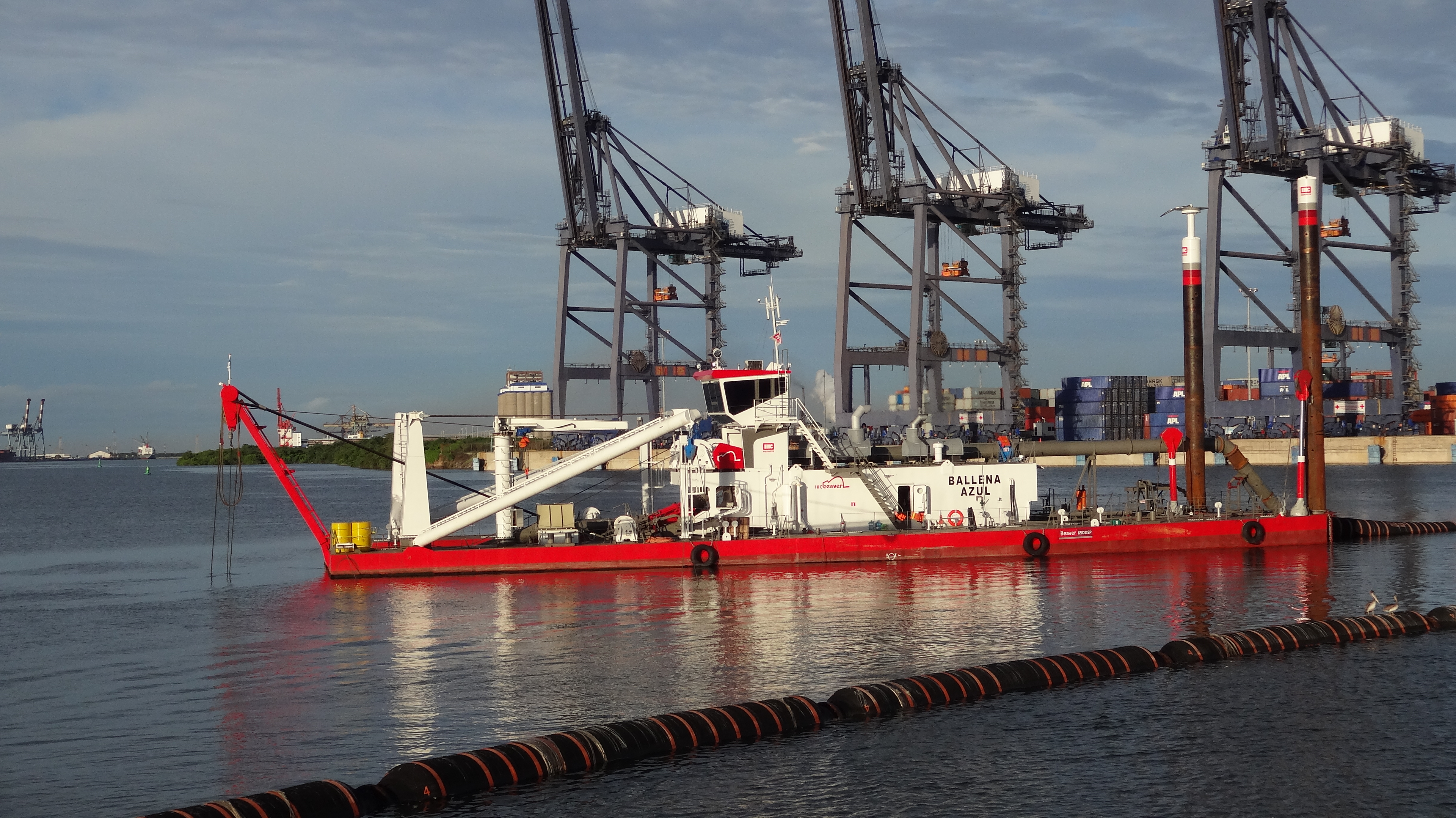Environmental dredging

Environmental dredging targets polluted materials in sections of ports and rivers, often within industrial areas. These remediation projects require accurate dredging, low generation of turbidity and low spillage in order to remove contamination without harming the surrounding environment.
In addition to this there is a large focus on the reuse of sediment. Removing contaminated soil from one location to another just moves the issue, it doesn’t solve it. This is why many innovative solutions are being employed when environmental dredging.
How does environmental dredging work?
Many environmental dredging projects are combined with the creation of an infrastructure for which they can reuse of silt deposited in geotubes that form the foundation for dikes. This creates cost benefits and isolates the contaminated soil.
1. Project planning
After identifying an opportunity comes the planning phase. Figuring out the best way to approach a dredging project, determining the most optimal approach and equipment required in combination with the anticipated return on investment will provide an answer to the question: can and should we do it? For environmental dredging projects in particular a large focus will be on how to deal with the contaminated soil. It is during the project planning that an answer to that dilemma must be formed.
It is our aim to make sure that whatever project and approach you choose you will be successful. Royal IHC is able to assist in the very first phases of a project via consultancy, feasibility studies, setting up a preliminary business case and more.
2. Equipment selection
Once the general outline of a dredging project is known comes the phase of how exactly are we going to do this? The practical side of the operation. Do we need a cutter suction dredger, trailing suction hopper dredger or perhaps smaller, more specialised equipment? What size should it be? Do we use Geotubes or are we going to dispose of the soil in a different way? How much will it cost and is there more we need to successfully execute this work? But also, is our crew skilled enough? Can we do this or do we need training or support beforehand?
Royal IHC has equipment available designed specifically for the conditions suitable for land reclamation
- Cutter suction dredger
- Trailing suction hopper dredger
- Dredge pump
- Dredge line components
- Operations monitoring
3. Execution
Now that everything is in place; the studies have proven it possible, equipment has been delivered and personnel can operate it, it is just a matter of doing the job. In this stage of a project other concerns arise such as how can we keep the operation running, can we optimize our process and, possibly, how can we grow our business, find new work and expand our fleet.

Are you ready to start your project?
Get in touch and we will help you get started.